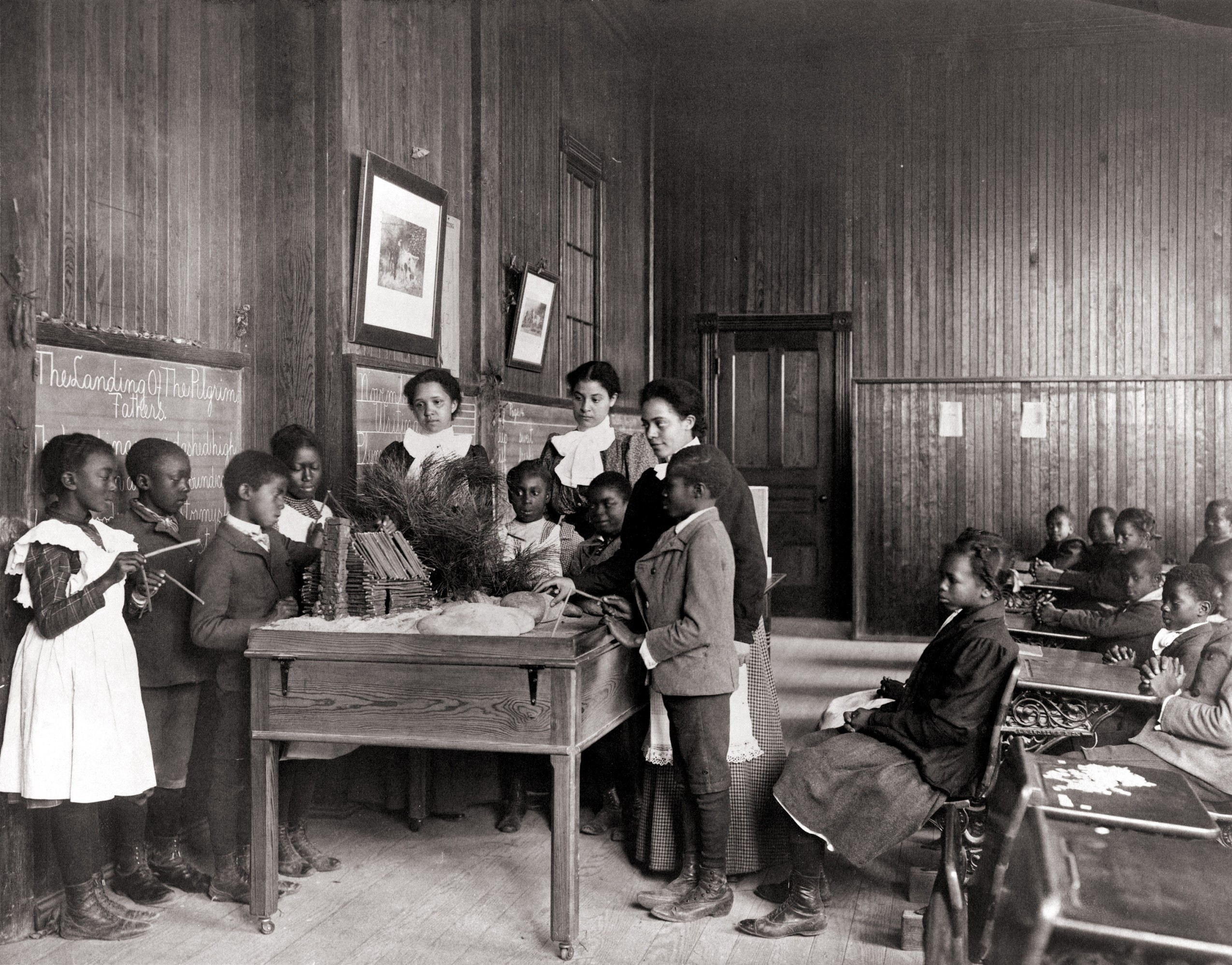School Desegregation: The End Of An Order And The Beginning Of A New Debate

Table of Contents
The Legacy of Brown v. Board of Education
The Supreme Court Ruling and its Initial Impact
The 1954 Brown v. Board of Education Supreme Court decision declared state laws establishing separate public schools for Black and white students unconstitutional. This monumental ruling aimed to dismantle the Jim Crow system's cornerstone of educational inequality. The initial impact was varied across the nation.
- Increased Enrollment of Black Students: In some areas, the ruling led to the immediate integration of schools, with Black students enrolling in previously all-white institutions.
- Examples of Successful Integration: Certain communities saw successful integration, demonstrating the possibility of creating inclusive learning environments.
- Widespread Resistance: However, many states and communities met the ruling with fierce resistance, employing tactics known as "massive resistance." This included the closure of public schools, the creation of private segregated academies, and various legal challenges.
The Implementation Challenges and Setbacks
Despite the legal victory, full desegregation proved exceptionally difficult to achieve. Numerous obstacles hindered progress and fueled the persistence of racial disparities in education.
- De Facto Segregation: Even after legal segregation ended, de facto segregation—segregation resulting from housing patterns, school district boundaries, and other socioeconomic factors—continued to perpetuate racial imbalances in schools.
- White Flight to the Suburbs: Many white families moved to suburban areas to avoid integrated schools, further exacerbating segregation and creating unequal resource distribution between predominantly white and predominantly minority schools.
- Inadequate Funding: Historically underfunded schools in Black communities often lacked resources compared to their white counterparts, creating and perpetuating an achievement gap.
- Resistance from Local Authorities: Local governments and school boards frequently resisted integration efforts, employing various strategies to delay or circumvent desegregation mandates.
- Busing Controversies: Busing, implemented as a tool to achieve racial balance in schools, became a highly contentious issue, sparking protests and legal battles in many communities.
The Persistence of School Segregation
De Facto Segregation and its Manifestations
Today, school segregation persists, albeit in subtler forms than the overt legal segregation of the past. De facto segregation remains a significant challenge, manifesting in various ways:
- Residential Segregation: Unequal housing patterns continue to concentrate students of different racial and ethnic backgrounds in different school districts.
- School District Boundaries: The drawing of school district lines often reinforces existing residential segregation, perpetuating racial imbalances in schools.
- Funding Disparities: Significant disparities in school funding persist, with schools in predominantly minority communities often receiving less funding than those in predominantly white communities. This disparity impacts resources, teacher quality, and educational opportunities.
The Achievement Gap and its Relationship to Segregation
A strong correlation exists between school segregation and the achievement gap—the persistent disparity in academic performance between different racial groups.
- Statistical Evidence: Numerous studies demonstrate a clear link between school segregation and lower academic achievement among minority students.
- Contributing Factors: This gap is influenced by factors such as unequal access to resources, differing teacher quality, and the cumulative effects of historical and ongoing systemic inequalities.
- Long-Term Impact: The achievement gap has profound and lasting consequences, impacting college enrollment, career opportunities, and overall socioeconomic well-being.
Current Debates and Future Directions
The Role of School Choice and Charter Schools
School choice and charter schools have become central to the debate on school segregation. While proponents argue they offer alternatives to underperforming schools and promote diversity, critics raise concerns about their potential to exacerbate segregation.
- Arguments for School Choice: Advocates suggest that school choice empowers families to select schools best suited to their children's needs, potentially fostering a more diverse learning environment.
- Criticisms of School Choice: Critics argue that school choice can lead to further segregation, as families may opt for schools with predominantly similar racial or socioeconomic backgrounds.
- Racial Composition of Charter Schools: Data on the racial composition of charter schools reveals mixed results, with some demonstrating increased diversity and others reflecting existing patterns of segregation.
Strategies for Achieving Equitable Education
Addressing school segregation and promoting equitable education requires a multifaceted approach encompassing various policy strategies and community-based initiatives:
- Increased Funding for Under-Resourced Schools: Investing in under-resourced schools is crucial for equalizing access to resources and educational opportunities.
- Affirmative Action Policies: Implementing carefully designed affirmative action policies can promote diversity in schools and counteract the effects of historical segregation.
- Redistricting: Strategic redistricting can be employed to create more racially integrated school districts.
- Community-Based Initiatives: Community-based programs and partnerships can play a vital role in fostering inclusive school environments and promoting educational equity.
Conclusion
The legacy of Brown v. Board of Education is a complex and evolving narrative. While legal segregation ended, the fight for truly equitable education continues. De facto segregation, perpetuated by socioeconomic inequalities and historical patterns, creates ongoing challenges. The debate surrounding school choice and the implementation of effective integration strategies are crucial to addressing these issues. Understanding the complexities of school desegregation is crucial to fostering a more equitable future. Continue researching the effects of school desegregation and advocate for policies that address the persistent issue of unequal educational opportunities. For further information on this critical topic, visit the website of the NAACP Legal Defense and Educational Fund.

Featured Posts
-
 Loyle Carner On Fatherhood New Music Glastonbury And More
May 03, 2025
Loyle Carner On Fatherhood New Music Glastonbury And More
May 03, 2025 -
 Energy Policy Overhaul A New Direction Guido Fawkes Analysis
May 03, 2025
Energy Policy Overhaul A New Direction Guido Fawkes Analysis
May 03, 2025 -
 Mini Camera Chaveiro Pequena Discreta E Muito Eficaz
May 03, 2025
Mini Camera Chaveiro Pequena Discreta E Muito Eficaz
May 03, 2025 -
 1 Mayis Emek Ve Dayanisma Guenue Tarihsel Arbedeler Ve Guenuemuezuen Oenemi
May 03, 2025
1 Mayis Emek Ve Dayanisma Guenue Tarihsel Arbedeler Ve Guenuemuezuen Oenemi
May 03, 2025 -
 Offshore Wind Farm Economics A Turn Against High Cost Projects
May 03, 2025
Offshore Wind Farm Economics A Turn Against High Cost Projects
May 03, 2025
Latest Posts
-
 Dari Sampah Menjadi Harta Manfaat Cangkang Telur Bagi Pertanian Dan Peternakan
May 04, 2025
Dari Sampah Menjadi Harta Manfaat Cangkang Telur Bagi Pertanian Dan Peternakan
May 04, 2025 -
 Raya Promotion Free Hpc Ev Charging On Shell Recharge East Coast
May 04, 2025
Raya Promotion Free Hpc Ev Charging On Shell Recharge East Coast
May 04, 2025 -
 Daur Ulang Cangkang Telur Pupuk Alami Dan Sumber Kalsium Untuk Tanaman Dan Hewan
May 04, 2025
Daur Ulang Cangkang Telur Pupuk Alami Dan Sumber Kalsium Untuk Tanaman Dan Hewan
May 04, 2025 -
 Enjoy 100 Rebate On Shell Recharge Hpc Ev Chargers This Raya East Coast
May 04, 2025
Enjoy 100 Rebate On Shell Recharge Hpc Ev Chargers This Raya East Coast
May 04, 2025 -
 T 1
May 04, 2025
T 1
May 04, 2025
